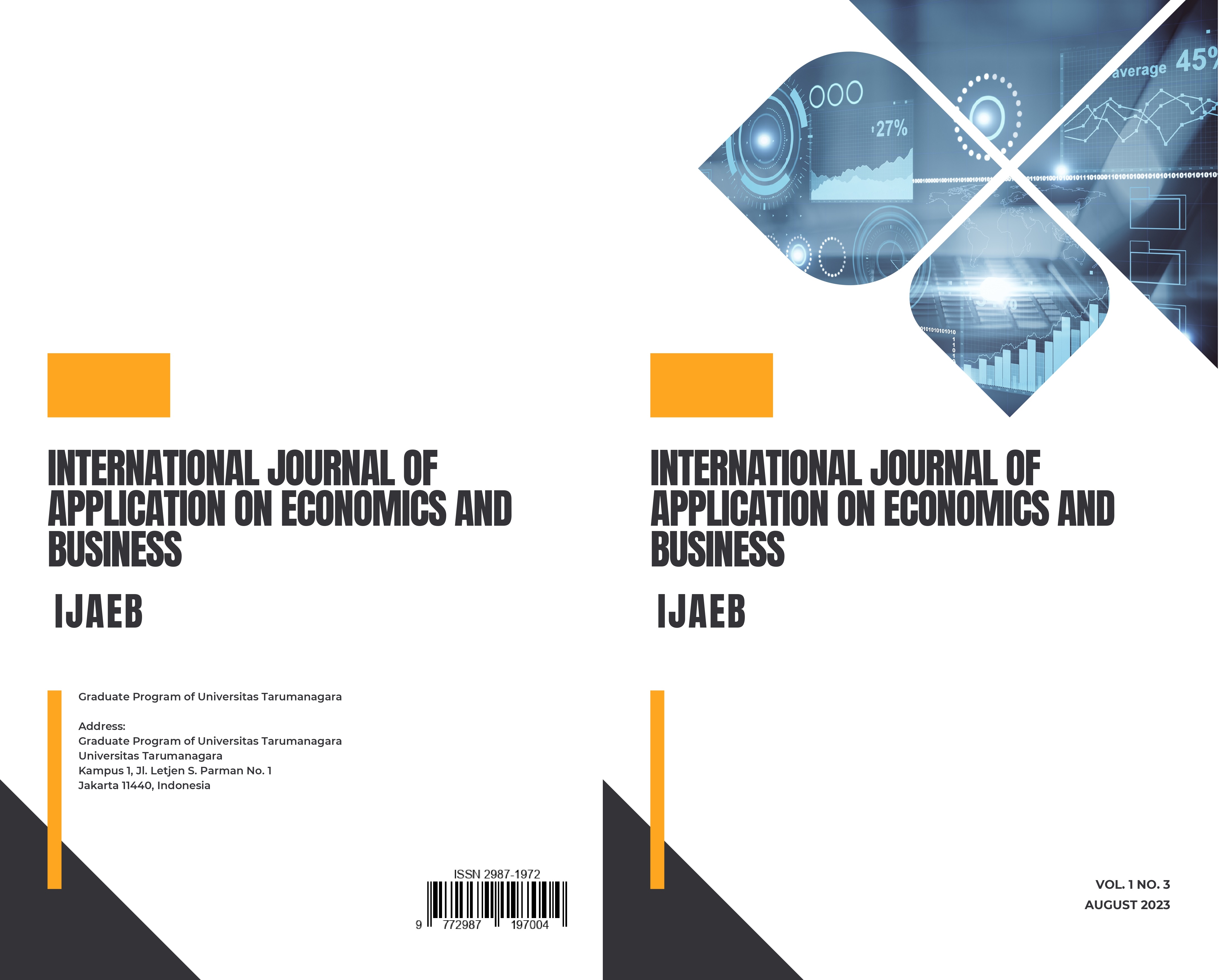THE EFFECT OF THE FRAUD TRIANGLE IN DETECTING FRAUDULENT FINANCIAL REPORTING IN INDONESIAN BANKING SECTOR COMPANIES
Main Article Content
Abstract
This research aims at finding out the influence of factors in fraud triangle theory towards fraudulent financial reporting in banking companies in Indonesia. Research sample was chosen by using some criteria that consist of banking sector companies registered and listed in Indonesian Stock Exchange & Bank Based on Business Activity II, III, IV group from 2017 to 2019. These criteria chose 37 banks as sample processed by e-Views 12 and Microsoft Excel application. Fraud triangle theory divides three fraud factors: pressure, opportunity, and rationalization. Pressure factor includes external pressure and financial target. Opportunity factor is reflected by monitoring variable, and rationalization factor consists of auditor change and accrual method variable. Research results show that independent variables gave significant impact to dependent variable, except for monitoring and auditor change variable.
Article Details

This work is licensed under a Creative Commons Attribution-NonCommercial-ShareAlike 4.0 International License.
This journal provides immediate open access to its content on the principle that making research freely available to the public supports a greater global exchange of knowledge.
IJAEB by Graduate Program of Universitas Tarumanagara is licensed under a Creative Commons Attribution-NonCommercial-ShareAlike 4.0 International License.. Permissions beyond the scope of this license may be available at https://journal.untar.ac.id/index.php/ijaeb
References
Cressey, D. Other people’s money: a study of the social psychology of embezzlement. Free Press, 1953. DOI: https://psycnet.apa.org/record/1954-06293-000
Jensen, M. C., & Meckling, W. H. Theory of Firm: Managerial Behavior, Agency Cost, and Ownership Structure. Journal of Financial Economics, Vol. 3, pp. 305-360, 1976. DOI: https://doi.org/10.1016/0304-405X(76)90026-X
Scott, W. Financial Accounting Theory (Fifth Edition). Pearson Education, 2009. ISBN: 978-0-13-207286-1
Spence, M. Job Market Signalling. The Quarterly Journal of Economics, Vol. 87, pp. 355-374, 1973. DOI: https://doi.org/10.2307/1882010
Ross, S. A. The Determination of Financial Structure: The Incentive-Signalling Approach. The Bell Journal of Economics, Vol. 8, pp. 23-40, 1977. DOI: https://doi.org/ 10.2307/3003485
Brigham, E. F., & Houston, J. F. Fundamental of Financial Management: Fifteenth Edition, 2016. Cengage Learning, Inc.
Cendrowski, H., Martin, J., Petro, L. W. The Fraud Triangle: The Handbook of Fraud Deterence. John Wiley & Sons, Inc. DOI: https://www.perlego.com/book/2784146/the-handbook-of-fraud-deterrence-pdf
Anjilni, R. Q. Pengaruh AChange, Oship, Leverage, dan Receivable terhadap Fraud. Jurnal Akuntansi Berkelanjutan Indonesia, Vol. 4, No. 1, pp. 104-124. DOI: 10.32493/JABI.v4i1.y2021.p104-124, 2021
Aprillia, Cicilia, O., & Sergius, R. P. The Effectiveness of Fraud Triangle on Detecting Fraudulent Financial Statement: Using Beneish Model and The Case of Special Companies. Jurnal Riset Akuntansi dan Keuangan, Vol. 3, No. 3, pp. 786-800, 2015. DOI: https://doi.org/10.17509/jrak.v3i3.6621
Prasmaulida, S. Financial Statement Fraud Detection Using Perspective of Fraud Triangle Adopted by SAS No. 99. Asia Pasific Fraud Journal, Vol. 1, No. 2, pp. 317-355, 2016. DOI: http://dx.doi.org/10.21532/apfj.001.16.01.02.24
Iqbal, M., & Murtanto. Analisa Pengaruh Faktor-Faktor Fraud Triangle terhadap Kecurangan Laporan Keuangan pada Perusahaan Property dan Real Estate yang Terdaftar di Bursa Efek Indonesia. Seminar Nasional Cendekiawan 2016, pp. 17.1-17.20, 2016. DOI: https://doi.org/10.25105/semnas.v0i0.900



